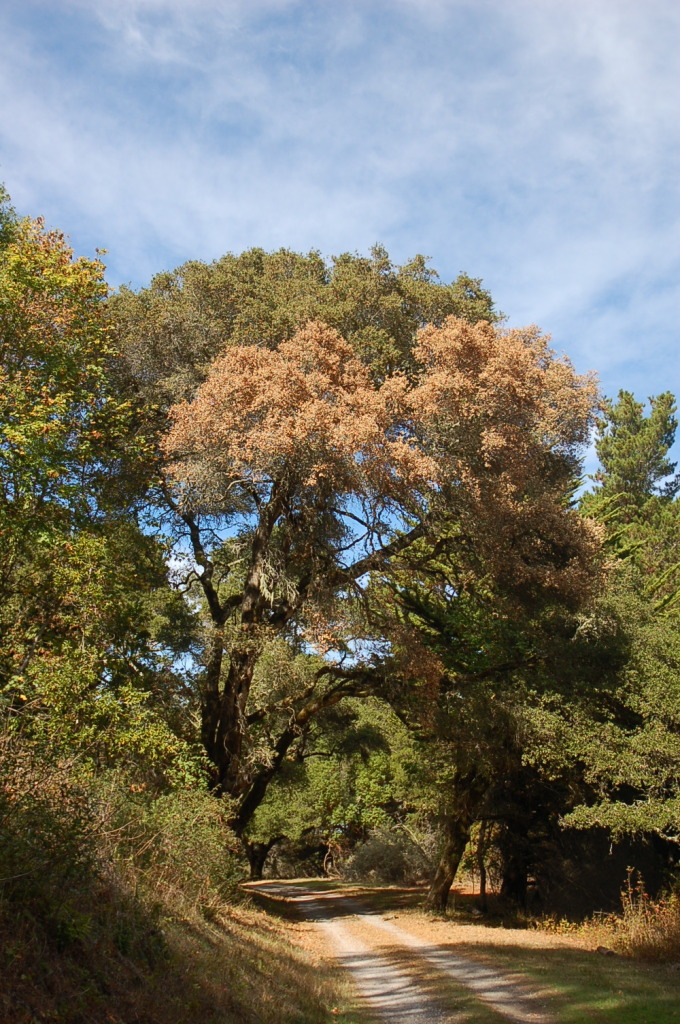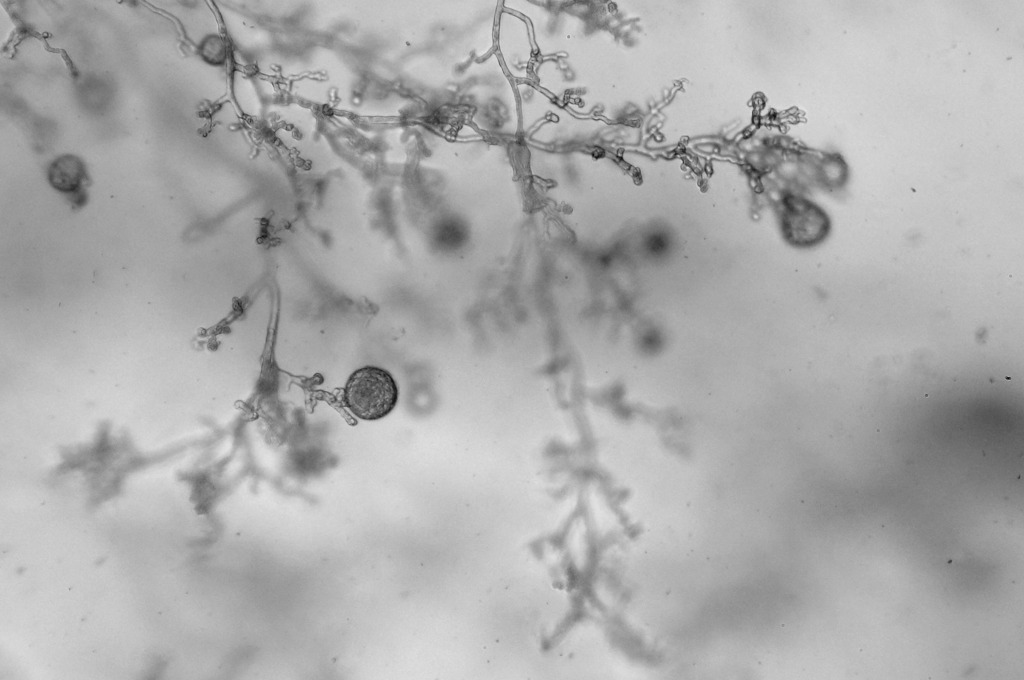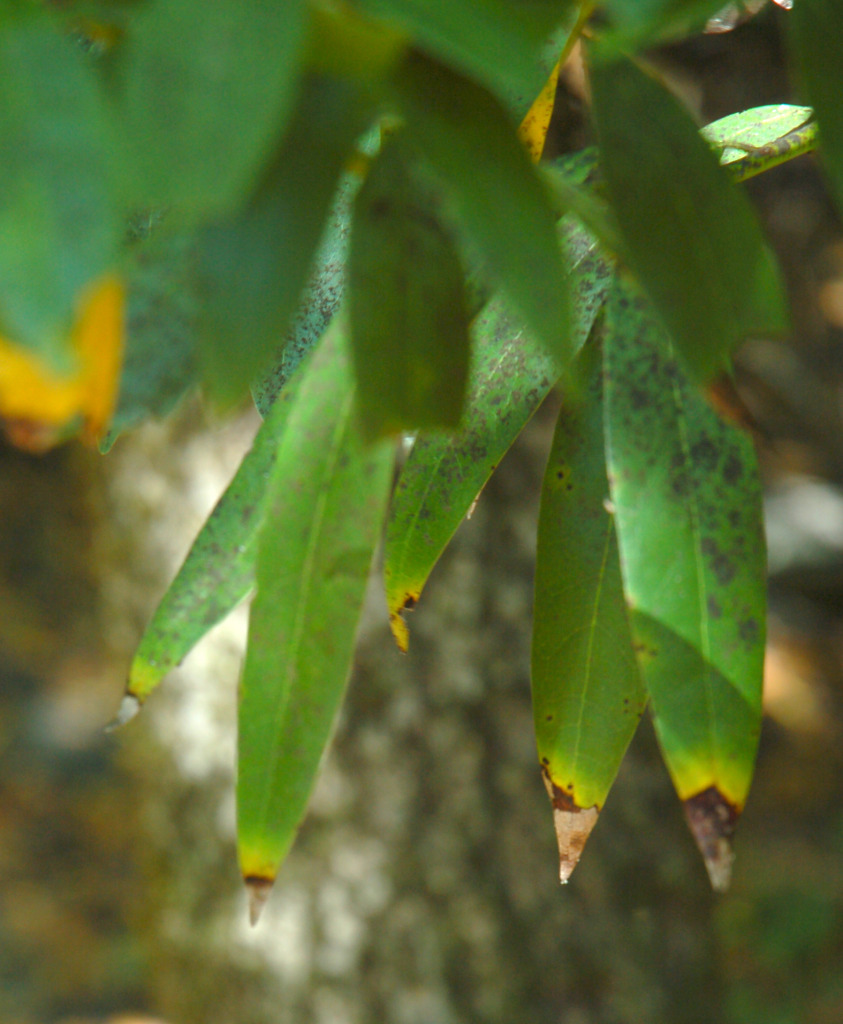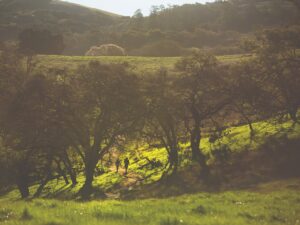When Jane Kotowski moved to Orinda last year, she found herself in the midst of an extensive coast live oak forest that, in turned out, needed some TLC.
Kotowski is an avid gardener and a volunteer at the UC Botanical Garden, so taking care of plants is her forte. The oak forest, which stretches all the way into Briones Regional Park, is interspersed with bay laurels (among other tree species), a combination that can be deadly, as any botanist in Northern California knows.
During the rainy season, bay laurels can easily infect nearby coast live oaks, and several other oak species, with the fungal pathogen called Sudden Oak Death (SOD). Kotowski trained to participate in Sudden Oak Death surveys and began sampling the bay laurels on her property.
“When the test results came out, low and behold we had one tree test positive — an extremely large bay laurel in the midst of small bay laurels with all these beautiful specimen oak trees,” she said.
It was a 40-foot tall bay laurel, but no matter, Kotowski called together the members of her homeowners association, and in late October they brought the bay laurel down, along with about a dozen other bays deemed at risk for transmitting the pathogen to the nearby oaks.
The tree-felling is part of a wider response that forest pathologist Matteo Garbelotto is urging people take this extremely dry fall to beat back SOD, which has reached epidemic levels in certain areas of the Central Coast and Bay Area.
California’s severe drought is entering a fourth year, and whether or not the rains materialize in a month or so, the dry conditions present a rare opportunity to stem the spread of the hydrophilic pathogen, Garbelotto said.
“SOD is never going to go away. It’s always going to be with us so what we need to do is learn how to live with it,” Garbelotto said. “But we can lower it to a chronic level rather than keep it at an epidemic level. In a year like this we have a better chance to do that with less effort.”

Phytophthora ramorum spreads by way of spores. During a rainstorm, the spores glide off the leaves of affected bay laurels and infect neighboring bays, or certain types of oaks (they include California coast live oak, black oak, shreve oak, and canyon live oak) and tanoaks. The oaks themselves are terminal hosts, meaning they pose no risk of sporulation. And some oak species, notably valley oak and blue oak, show no signs of susceptibility to the disease, perhaps because of differences in their bark. During the dry season, the pathogen dries out on the bay leaves, or goes dormant, only to awaken at the first rains and become infectious again.
By the time the rains come, it’s already too late to stop the spread. Removal of diseased trees can actually heighten transmission. That’s why dry weather, paradoxically when SOD is least apparent, is the best time to act, Garbelotto says.
“If you had one year of drought, it wouldn’t change much because the pathogen is dormant in most of the leaves,” he said. “Really, after a two-year drought the number of leaves with any signs of infection is very small. As you move into a third year of drought the number will be completely wiped out.”
Fog apparently can keep just enough moisture in the leaves for the pathogen to survive, so coastal communities are still at risk of SOD spreading. Garbelotto is recommending getting rid of certain bay laurel this fall in high risk areas that are potential disease vectors. Bays that are within 10 feet of an oak tree, and are not holding up a steep slope or alongside a riverbank, could be good candidates, even if they have not tested positive for infection, he said.
And for high value oak trees, such as monumental trees, he’s suggesting preventative treatment with a kind of fungicide made with a phosphorous acid compound that’s applied to the bark or through injections, much like a vaccination.

“We tell people to lower the number of trees you’re going to protect but treat them every year,” he said. “Once we get more data we may go to once every two years of treatment.”
Much of what we know about the spread of SOD in the Bay Area comes from the 20,000 samples that volunteers have collected every spring since 2008 for Garbelotto’s SOD Blitz Project. But there are still holes in the risk maps where more sampling is needed.
“If we have another drought, it would be really fantastic for more people to participate in the surveys so we can get a better understanding of where the strongholds of the pathogen are,” he said.
Volunteers need to go through a training to participate.
Kotowski said she will certainly be out there again this coming spring with recruits from her neighborhood.
“I’m hoping to do a much wider area than we did this year,” she said. “I’m the only one who did it and I just did part of my street.”
The SOD Blitz Project risk map is now available as a smart phone app, allowing you to see whether your oaks are at risk for SOD.





